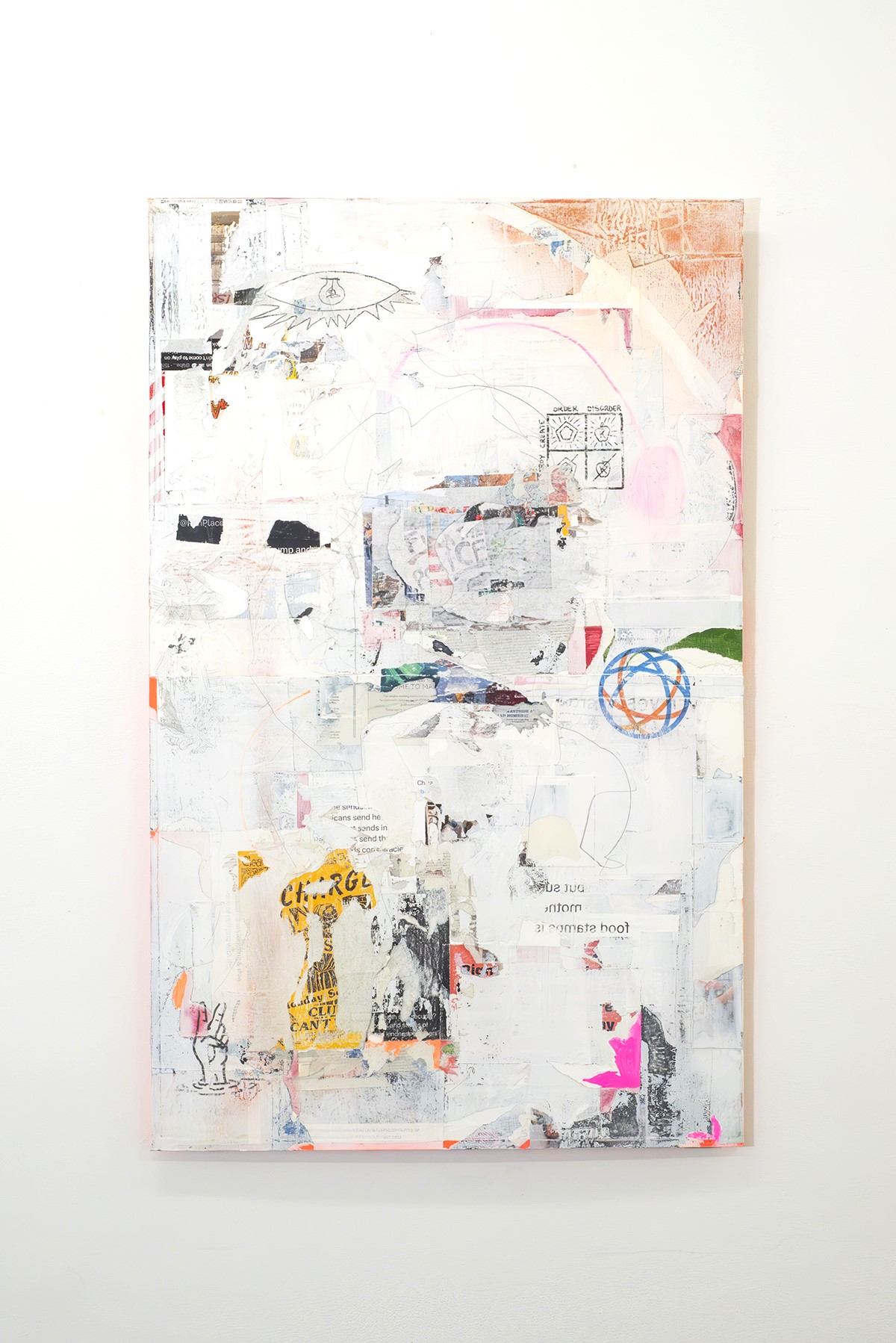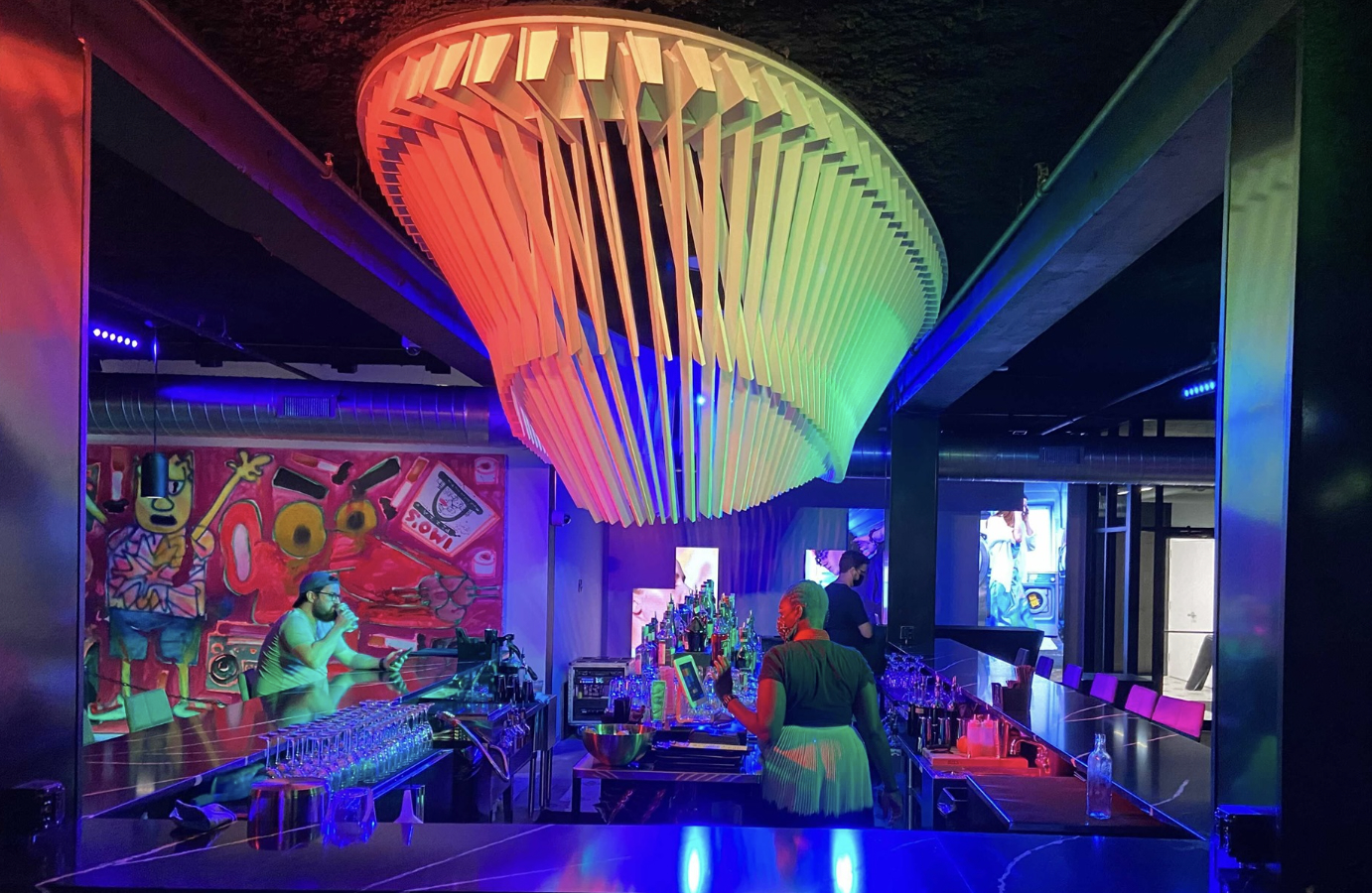Anyone strolling past 3333 Washington Avenue on a lovely St. Louis evening might be instantly drawn in by the stunning rainbow chandelier, vibrant paintings, stylish furnishings and huge DJ booth viewable through the wall of plate glass windows at Sophie’s Artist Lounge. More than just a nightclub, Sophie’s is an innovative space where artists, curators and DJs play an integral role in shaping St. Louis’ cultural landscape.
Named for the granddaughter of KAF founders Ken and Nancy Kranzberg, Sophie’s originated in a second-floor space in .ZACK in 2017, catering to the local artistic community, specifically resident organizations within the building. Like all KAF venues, Sophie’s remains a non-profit model with every dollar spent by patrons going directly back into supporting KAF artists and programs.
Sophie’s relocated to its current location in October 2021, in a vibrant and expanded street-level space that includes a gallery, bar, and state-of-the-art DJ booth and serves as a gateway to The Walls Off Washington mural walk.
“Within the Kranzberg Arts Foundation ecosystem and the Grand Center Arts District, Sophie’s plays an important role as that bridge between the formal and the informal, where the gallery meets the lounge, and the artists, performers, and audience all share the same space. It’s a hub for the creative energy that keeps St. Louis vibrant,” says KAF Promotions and Events Manager Nanyamka Ewing.
The gallery space, which extends into the hallways of the multi-use building features rotating exhibitions throughout the year. Currently on display is “To STL With Love,” a landmark exhibition celebrating the deep roots and wide-ranging impact of hip-hop culture in St. Louis curated by Kris Blackmon.
Inside the bar, an 8’ x 10’ specially-commissioned painting by internationally renowned, St. Louis-based artist Katherine Bernhardt is on permanent display, injecting the space with neon colors. The lounge area features custom arts furniture designed and built by Chandler Ahrens and hand-painted by Screwed Arts Collective and Painted Black STL.
While visual arts are an integral part of Sophie’s, the music takes center stage on any given night. The venue is home to KAF’s DJ Residency program. In July, a dynamic new class of 10 artists began their residency, including: DJ PBNJEFFY, DJ KC Mackey, DJ MAHF, DJ Sinamin, DJ Nune is Lamar Harris, TreHitz, DJ Rico Steez, Anansi Spins, Enoch Raavi and James Yeo.
Their energy, creativity, and range elevates the sound and soul of the space, rotating their various styles and influences throughout the week.
These 2025-2026 residents include: While this new class is bringing fresh vibrations, resident DJs Agile One and Biko FKA Needles have been holding it down and shaping the sonic identity of Sophie’s for nearly four years and continue to be pillars in the booth, bringing unmatched style, musicality, and leadership.
Each September, Sophie’s becomes a central part of the annual MATI Conference & Festival in the heart of the festival footprint. Attendees step into the air-conditioned refuge of Sophie’s between main stage sets to sit a spell, listen to DJ sets, sip cocktails and take in the art.
Other weekends, Sophie’s transforms into a marketplace featuring local artisans and small businesses selling their wares while local food trucks offer a variety of delicious fare.
“Sophie’s is really about creating a space where art, music, and community overlap — a place that celebrates local talent while inviting people to connect in meaningful ways. From the DJ residencies and rotating exhibitions to collaborations like MATI and The Walls Off Washington, everything we do is centered around supporting creative expression and making it accessible to everyone,” Ewing says.
Sophie’s is open Wednesday- Saturday from 1:00 p.m.to 1:30 a.m. For more information, visit kranzbergartsfoundation.org/sophies-artist-lounge.











